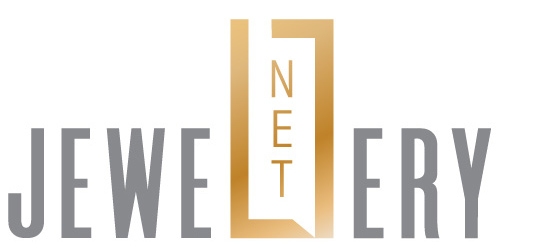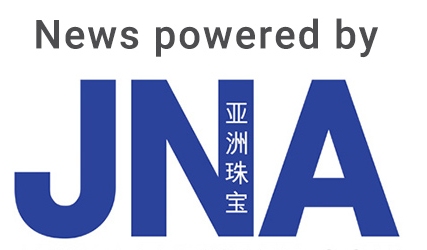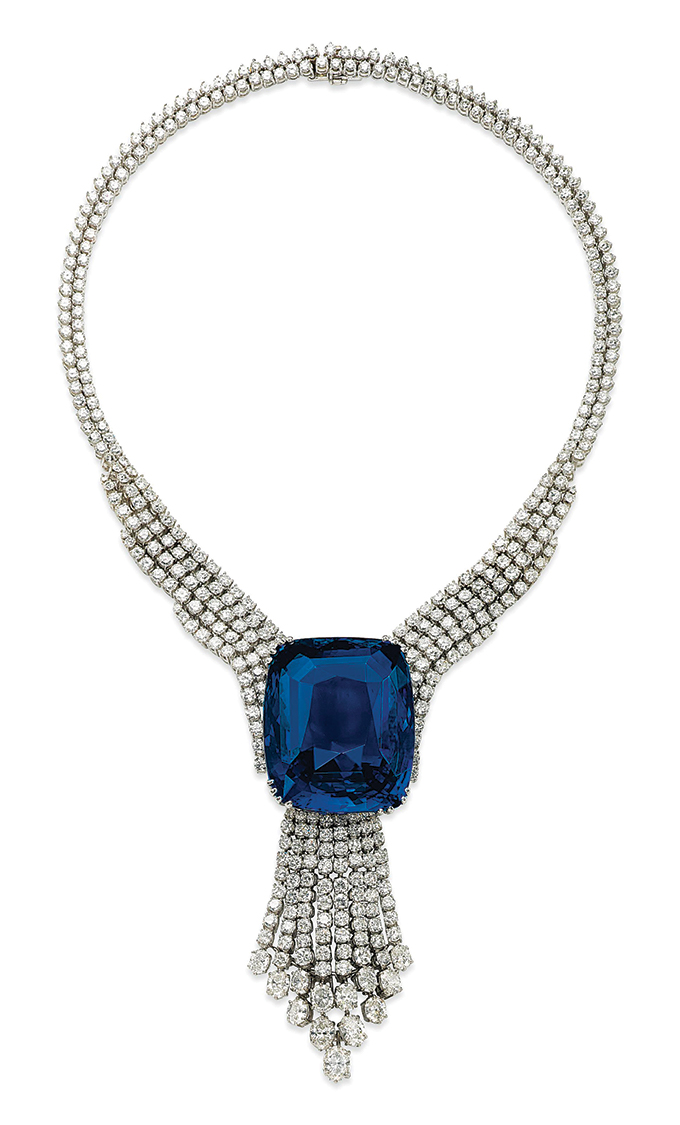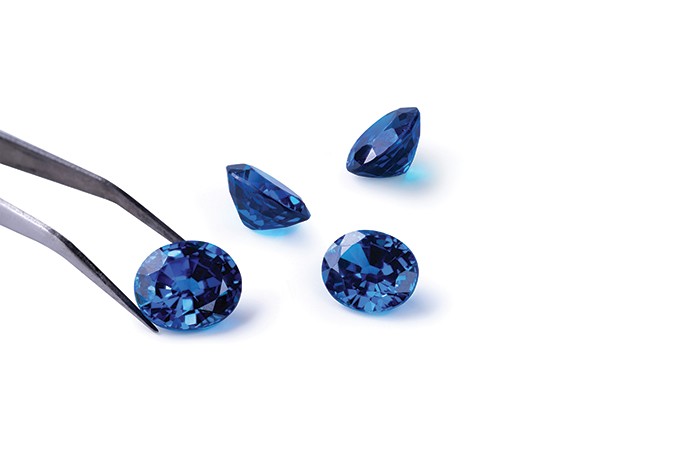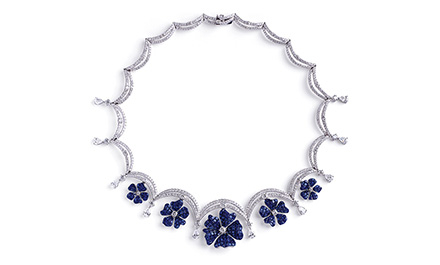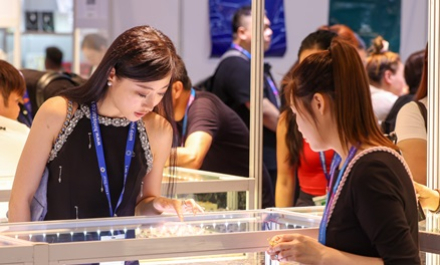Robust consumer demand for sapphires will continue unabated amid exponential price hikes, thanks to their increasing rarity and innate splendour.
This article first appeared in the JNA November/December 2023 issue.
Coloured gemstone manufacturers are on the same page when it comes to beloved blue sapphires: These gems have become scarcer and highly coveted more than ever, but they are also a great deal pricier.
According to coloured gemstone dealers, sapphire prices have generally skyrocketed by 50 per cent to 70 per cent, and as much as 100 per cent for some stones, compared to pre-pandemic times. While this represents solid market demand, it is also indicative of continued tightening of supply at the mines, particularly those of premium-quality stones.
Buyers now lean towards top-quality unheated stones of 2 carats to 6 carats since bigger stones have become too expensive, revealed suppliers. Unheated stones are extremely favoured by the Chinese market while US and European customers are more receptive to heated sapphires.
Colour and provenance are critical considerations, too. Clients who are on the lookout for the classic deep blue would go for Royal Blue sapphires while those opting for a more intense brilliance would gravitate towards Cornflower Blue variants. Peacock Blue sapphires meanwhile are characterised by their electric blue hues, akin to a peacock’s feathers. Key sources of blue sapphires are Sri Lanka (Ceylon), Myanmar (Burma), Madagascar and Kashmir.
High prices notwithstanding, gem companies said buyer interest in sapphires is likely to stay strong, thanks to these gems’ extraordinary allure and history.
Scintillating sapphires
Armed with a comprehensive understanding of the market and the gemstone’s soaring value and potential for growth, traders and connoisseurs alike have invested heavily in sapphires over the years.
In November 2014, Christie’s sold an exceptional necklace adorned with a 392.52-carat blue sapphire for CHF16.96 million (around US$19 million at current exchange rates), making it the most expensive sapphire ever sold at auction. Known as the Blue Belle of Asia, this cushion-shaped Peacock Blue sapphire of Ceylon origin was described by the SSEF Swiss Gemmological Institute as possessing “extraordinary characteristics and merits special mention and appreciation.”
Meanwhile, the Peacock Necklace, which sold for around US$15 million at Christie’s Hong Kong in November 2018, set a world auction record for a Kashmir sapphire necklace at the time.
These are just two of the many sapphires that made auction history throughout the years.
Sapphires also figure strongly in the high jewellery collections of luxury jewellers such as Bulgari, Cartier and Van Cleef & Arpels, to name a few.
Market overview
Anurak Sinchawla, director of Thai sapphire supplier Sant Enterprises Co Ltd, said sapphires have a special beauty that has become even more desirable today due to the stone’s rarity.
“Demand for sapphires, unheated stones especially, rose drastically post-Covid,” noted Sinchawla. “What makes sapphires highly sought after is the wide spectrum of colours that they come in. Different shades of blue attract different people in different ways.”
Sant’s major markets are Europe and the US, but it also has a customer base in Asia, particularly Indonesia
and China.
Sinchawla said unheated sapphires have become 50 per cent to 70 per cent more expensive over the first half of 2023 as demand soared. Prices, however, are escalating at a rate that customers cannot fully comprehend or catch up with.
“Some buyers are adapting to these new price levels, but there is resistance,” he explained. “Demand has gone up so much amid a scarcity in unheated stones. However, those who understand the intricacies of the business and who want the material are willing to buy at current rates.”
Buyers prefer no-heat sapphires of 2 carats to 5 carats as bigger pieces are more costly and are better suited as a collector’s item. There is also a steady shift towards unheated sapphires, he continued.
The robust demand for no-heat sapphires is fuelled by Chinese buyers, according to MYA Rishaf, CEO of coloured gemstone dealer Domico Gems, which has offices in Sri Lanka, China, Malaysia and the US.
“Buyers would frequently ask for 3-carat to 6-carat sapphires in Royal Blue or Cornflower Blue. There is also a market for heated stones, especially in Europe and America as opposed to Chinese buyers who would only go for unheated stones,” noted Rishaf.
Domico Gems’ top market was China before the pandemic, but it has since refocused its business on Thailand. China’s reopening presents an opportunity to re-establish Domico Gems’ presence in the mainland market, he remarked.
Echoing prevailing market observations, Rishaf explained that buyers now need deeper pockets to continue purchasing premium goods, owing to a 30 per cent to 50 per cent rise in prices. For example, a 6-carat Royal Blue Sri Lankan sapphire with inclusions now sells for around US$16,000 to US$19,000.
A better-quality stone could command a price tag of about US$40,000, depending on clarity, quality and colour. By comparison, heated sapphires of 1 carat to 2 carats could cost about US$1,000 while a 10-carat to 15-carat stone could fetch anywhere between US$2,000 and US$5,000.
Mihir Patel, director of Krish Creations, also confirmed the market’s growing affinity for no-heat sapphires. “There are also buyers asking for heated sapphires, but they have one condition to fulfil: The sapphires must be Royal Blue,” he revealed.
In terms of sizes, 1-carat to 2-carat sapphires move the fastest as the market is more inclined to buy smaller stones that are more affordable.
Customers also have at their disposal a few alternatives to sapphires from known sources. At a jewellery fair held earlier this year in Hong Kong, Gemmatrix of Thailand displayed a 23.73-carat sapphire from Ethiopia.
“This stone exhibits a darker shade of blue, but there are others with more open colours. This specific Ethiopian sapphire is unheated and is more of a collectible,” Nikita Sachkov, manager at Gemmatrix, explained.
The stone carries a US$5,000 per-carat price tag compared to US$11,000 a carat for a 6.02-carat Royal Blue Sri Lankan sapphire that the company was also offering. Gemmatrix has a vast selection of sapphires, emeralds, rubies, spinel and tanzanite stones and fancy sapphires, to name a few. It mainly caters to buyers from Europe, the US and Russia.
Sachkov said blue sapphires from Sri Lanka and Madagascar continue to be a market favourite, but some buyers have become more accepting of unconventional options, depending on their preference and requirements.
Future of sapphires
Sant, which has been in the sapphire business for over a century, remains confident about growth going forward, owing to buyers’ unwavering fascination for sapphires, according to Sinchawla.
Supply constraints, however, will likely continue to put pressure on the trade. He explained, “Demand, especially for unheated sapphires, is far greater than what is in the market today. Eventually, there will be a plateau. People are going to resist the price and that is when we can see a slight drop in demand.”
